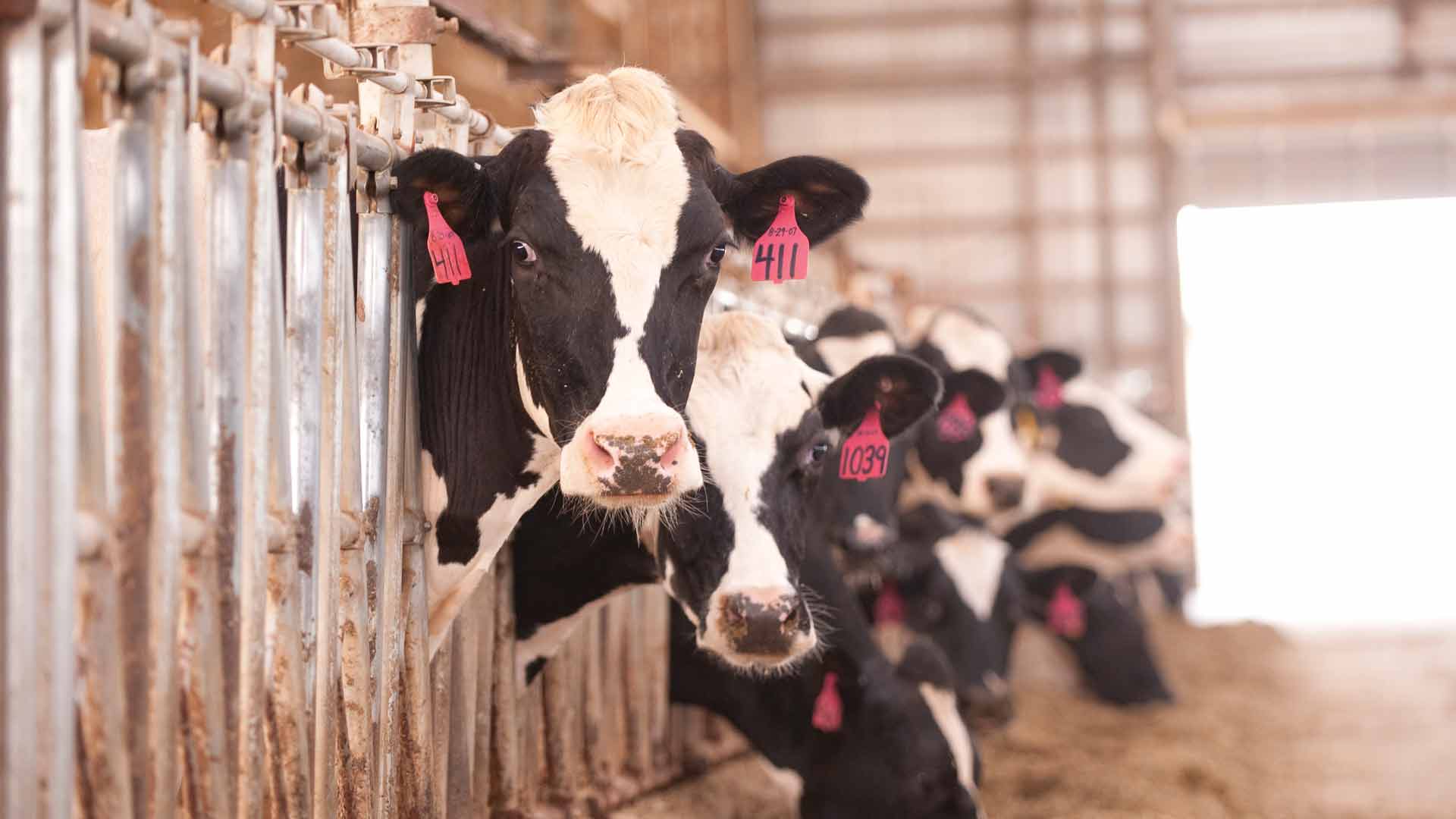–by Jonathan Eisenthal
Research sponsored by Minnesota Corn Research & Promotion Council (MCRPC) and AURI indicates rations high in reduced-fat distillers grains (the high protein ethanol coproduct) fill the bill as a feed for young dairy heifers. It’s economical, it’s efficient, and dairy producers end up with a sturdy, lean replacement heifer.
Jill Anderson, a dairy scientist at South Dakota State University, Brookings, conducted a study with graduate student Angela Manthey in which they fed 48 dairy heifers three different levels of distillers grains rations: 30 percent, 40 percent and 50 percent. The remaining diet was a simple mixture of grass and hay, with added vitamins and minerals. Rations were limit-fed to target required nutrient intakes. The heifers were fed for the four months critical in the development of a dairy cow: from six-and-a-half months to ten-and-a-half months old.
“We found that by increasing the level of distillers grains and using this feeding strategy we were really able to increase the feed efficiency of these heifers,” says Anderson. “We also improved the digestibility—they had higher digestibility of the proteins and dry matter as inclusion of distillers grains increased. Although we did cause some shifts in metabolic profile, the heifer’s body condition did not change. One big thing, however, is that we didn’t change the heifer’s body condition—this is very important.
Even though we were feeding the animals more distillers grains we didn’t cause the animals to get over conditioned. With dairy heifers, you don’t want them to put on fat,
you want them to put on lean muscle and frame size. It’s kind of exciting because we were able to do that with these diets, which were fairly simple diets.”
The interest in the fat level of the distillers grains derives from the increasingly common ethanol industry practice of drawing oils from the distillers grains to sell as a separate value-added product. This reduces the fat content from a high range of 10 to 15 percent down to a middle range of five to ten percent. It may become more common to offer distillers grains below five percent fat, says Anderson.
“Jill Anderson’s research is valuable for Minnesota’s corn producers,” says Paul Meints, director of research for Minnesota Corn Research & Promotion Council. “Jill produced some very good results, and this will help farmers develop better markets for their corn.”
“The project is a perfect example of the collaboration between AURI and Minnesota’s corn organizations,” says Randy Hilliard, who acted as the AURI project manager for Anderson’s research project. This project fits our core mission at AURI.
Anderson sees her findings as a win-win—demonstrating that ethanol plants can grow this particular market for their feed products, while livestock producers get a simple,
low-cost, effective feed ration.
“The big thing I learned from this research is there is a lot more flexibility in using distillers in heifer diets, than maybe most dairy producers realize,” says Anderson. “You can really tailor it to feeds you have on hand. Traditionally, people have said, ‘Oh, you don’t feed more than 10 or 20 percent distillers grains in the diet of dairy animals,’ but this research blew the roof off that previous inclusion rate recommendation. This research shows that you can go to 30 or 40 or 50 percent. If I were making recommendations to a producer I would say, go with 40 percent. It’s a good level to feed. We get concerned with the nitrogen load when you get up to the 50 percent distillers diet—but you can still feed it at 50 percent in a lot of circumstances—if you have a year when you don’t have a lot of forage on hand.”
“This project fits the core mission at AURI – developing new uses and new markets for agricultural products,” said Hilliard.
Idea to reality:
Could dairy producers feed reduced-fat distillers grains to dairy heifers and still get the type of replacement heifer they want?
AURI’s role:
AURI assisted the MCR&PC with review and selection of projects from their request for proposal process. AURI also provided project management services.
Outcomes:
These findings demonstrate that ethanol plants can grow feed markets for their coproducts and provide livestock producers a low-cost and effective feed option.
Partners:
Minnesota Corn Research & Promotion Council and South Dakota State University
Podcast: Play in new window | Download (939.9KB) | Embed
